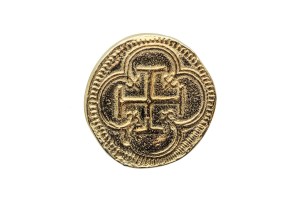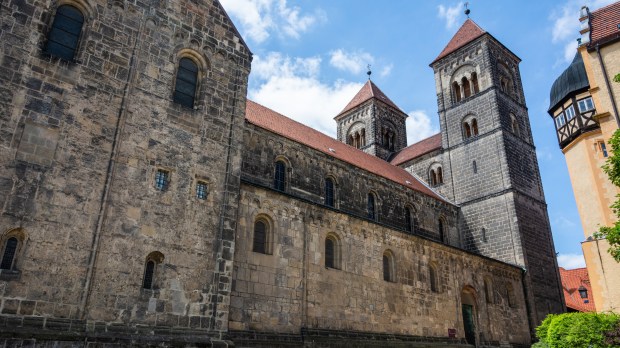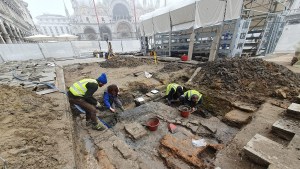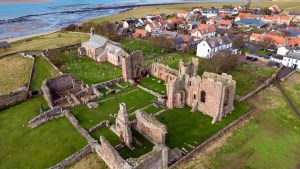Archaeologists in Germany have struck historical gold in Quedlinburg: the remains of a 10th-centurybaptismal font with possible ties to a powerful medieval dynasty. This font, located in a historically significant town, is believed to be where members of the influential Ottonian Dynasty were baptized.
The Ottonians ruled the Holy Roman Empire during the 10th and 11th centuries, and the city of Quedlinburg held significant importance during their reign. The newly unearthed font, found in the crypt of the Stiftsberg collegiate church, is a major discovery.
As explained in the article published by Medievalists.net, its quatrefoil shape marks it as the oldest of its kind found north of the Alps. This kind of font is typically byzantine, and most of these have been found in ancient churches in Northern Africa.
The quatrefoil, from the Latin for “four leaves,” is rich with Christian symbolism. With its four petals, it is especially associated with the four Gospel writers.

At the Stiftsberg, experts carefully uncovered a large quatrefoil cut into the sandstone floor. This depression, elaborately lined with remnants of an older floor, likely held a high-quality baptismal font, since removed. The craftsmanship suggests the font’s former importance.
Medievalists.net notes that this finding is significant for both art and architectural history. The quatrefoil shape holds special meaning, and the font’s location offers new clues about the history of the Stiftsberg’s buildings.
The font’s positioning indicates its presence in an even earlier church. This challenges previous assumptions that this area housed a residential building. It further underscores the Stiftsberg’s religious significance during the Ottonian period, about which little was previously known.
To know more about this finding, you can visit Medievalists.net, or the official website of the State Office for Heritage Management and Archaeology Saxony-Anhaldt.



